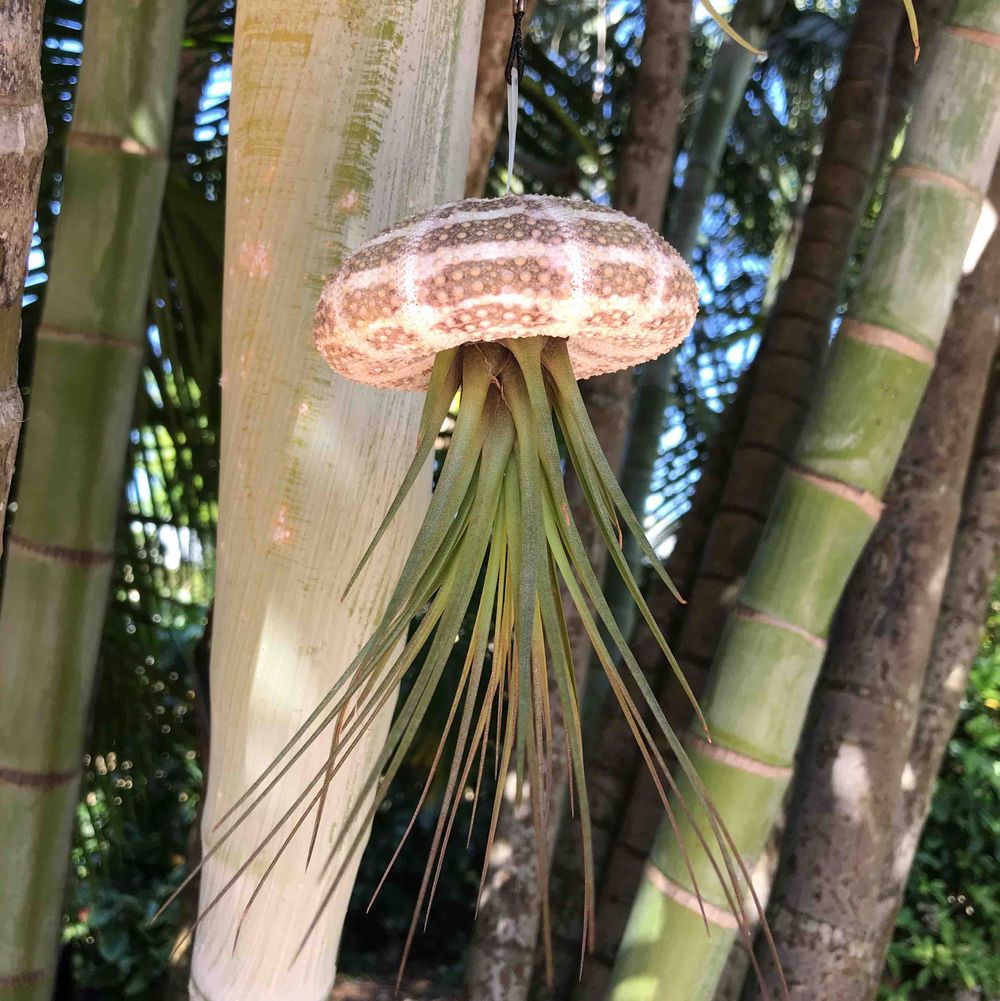Airplant
(Tillandsia)

Description
Tillandsia is a genus of plants belonging to the family Bromeliaceae. This genus consists of over 650 species, most of which are native to Central and South America, with a few species found in the southern United States, the West Indies, and parts of the Caribbean. Tillandsia plants are known for their ability to grow without soil, using their leaves to absorb nutrients and water from the air. These plants are also referred to as air plants, and they make popular ornamental plants due to their unique growth habit and interesting flowers. Taxonomy and Nomenclature The genus Tillandsia was named by the Swedish botanist Carl Linnaeus in 1753. The name Tillandsia honors the Finnish physician and botanist Elias Tillandz (1640-1693). Tillandsia belongs to the family Bromeliaceae, which is a large family of flowering plants that includes over 3,000 species. The family Bromeliaceae is divided into three subfamilies, one of which is Tillandsioideae, which includes the genus Tillandsia. Morphology Tillandsia plants come in a variety of sizes and shapes, ranging from small, rosette-forming plants to large, spreading plants. Most Tillandsia species are epiphytes, meaning they grow on other plants or objects, such as rocks or tree branches. These plants have specialized leaves that are adapted to absorb water and nutrients from the air, and they typically have few or no roots. The leaves of Tillandsia plants are typically narrow and pointed, and they may be smooth or covered in fine scales or hairs. The leaves often grow in a rosette pattern, forming a central cup or funnel that collects water and debris. Some species produce long, trailing leaves that allow the plant to spread out over a larger area. Tillandsia plants produce flowers on long, slender stalks that emerge from the center of the rosette or from the base of the plant. The flowers are often brightly colored and may be fragrant. The flowers of Tillandsia species are typically arranged in spikes or clusters and may be surrounded by colorful bracts. Ecology and Distribution Most Tillandsia species are native to Central and South America, where they grow in a variety of habitats, including rainforests, deserts, and high-elevation grasslands. Some species are found in the southern United States, the West Indies, and parts of the Caribbean. Tillandsia plants are epiphytes, meaning they grow on other plants or objects. They may also be found growing on rocks, cliffs, or other surfaces. These plants have evolved to absorb water and nutrients from the air, and they do not require soil to grow. Tillandsia plants have a symbiotic relationship with a variety of animals, including insects, birds, and mammals. Many species of Tillandsia produce nectar to attract pollinators, such as hummingbirds and bats. The leaves of Tillandsia plants may also provide shelter and nesting sites for a variety of animals. Cultivation Cultivating Tillandsia plants is relatively easy and requires only a few basic steps. Here are some guidelines for growing Tillandsia plants: Light: Tillandsia plants require bright, indirect light. They should be placed near a window that receives plenty of light but not direct sunlight, which can burn the leaves. Water: Tillandsia plants absorb water and nutrients through their leaves, so they do not require soil. Instead, they can be watered by misting the leaves with water. They should be misted at least once a week, and more often in hot, dry weather. Humidity: Tillandsia plants require a humid environment to thrive. They can be misted with water to provide the necessary humidity, or they can be placed in a humid area, such as a bathroom or kitchen. Fertilizer: Tillandsia plants require nutrients to grow and thrive. They can be fertilized once a month with a water-soluble fertilizer that is diluted to half strength. Air circulation: Tillandsia plants require good air circulation to prevent the growth of mold and other fungal diseases. They should be placed in an area with good air circulation, or a small fan can be used to circulate the air. Temperature: Tillandsia plants prefer warm temperatures and do not tolerate frost or freezing temperatures. They should be kept indoors during the winter in colder climates. Propagation: Tillandsia plants can be propagated by division, which involves separating the offsets from the mother plant and planting them in their own container. Propagation can also be done by seed, although this method is more difficult and time-consuming. In summary, Tillandsia plants are relatively easy to cultivate and can be grown indoors or outdoors, depending on the species. They require bright, indirect light, regular misting with water, and a humid environment to thrive. With the right care, Tillandsia plants can provide a unique and interesting addition to any home or garden.
Taxonomic tree:







